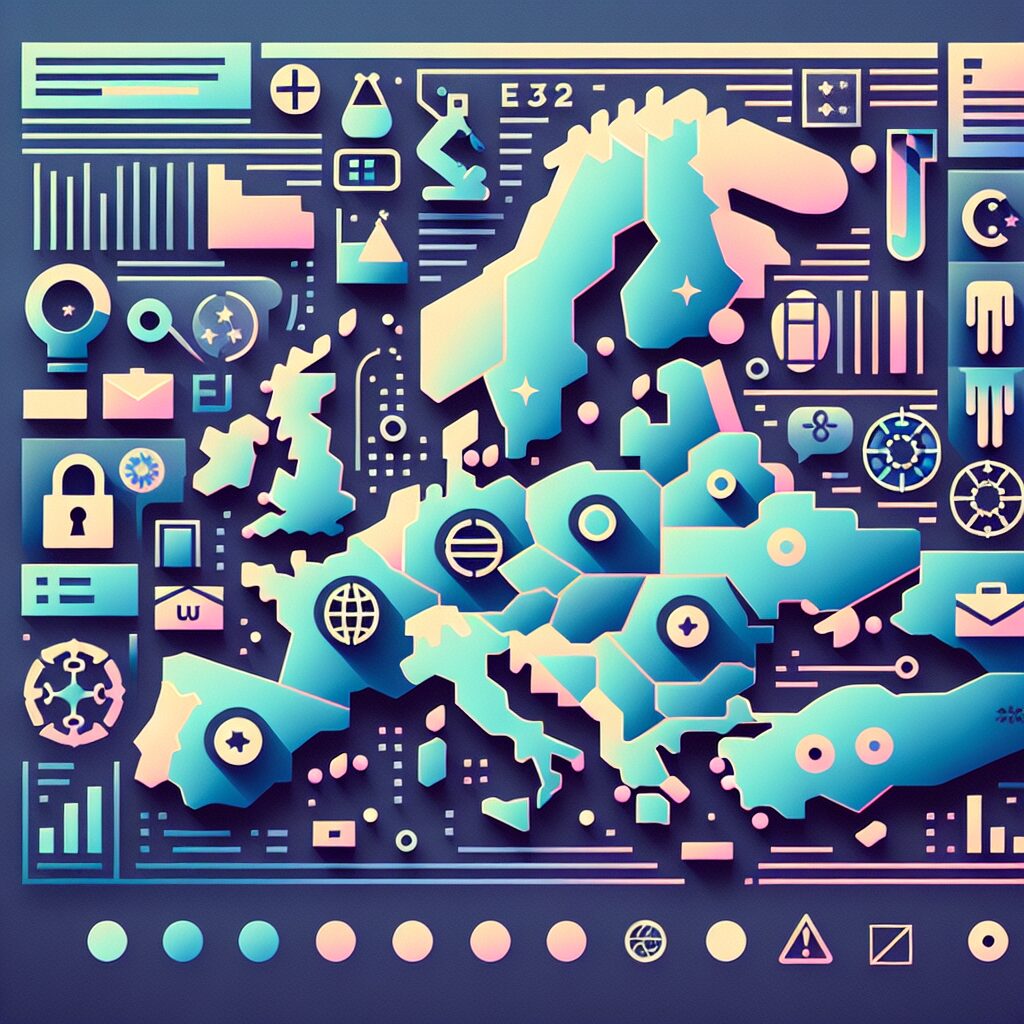About eldris
At Eldris, we automate SEO, multilingual site expansion, and EU compliance for brands scaling across Europe. Our AI-powered platform handles everything from content publishing to regulatory docs—so you don’t have to.
In This Article
- WEEE registration is mandatory in all EU and UK markets for electrical goods.
- Each country has its own registration system, fees, and reporting deadlines.
- Appointing an authorised representative is essential for foreign sellers.
- Non-compliance leads to fines, delisting, and possible bans.
- Automated tools and compliance partners can simplify cross-border obligations.
Understanding WEEE Obligations by Country
WEEE Registration Fundamentals
WEEE registration is a legal requirement for any producer, manufacturer, importer, or distributor that places electrical or electronic equipment on the market in the European Union or the United Kingdom. The WEEE Directive, originally established by the European Commission, mandates producers to take responsibility for the take-back, treatment, and recycling of appliances at the end of their life cycle. Each country administers this directive through country-specific authorities and compliance schemes, making it essential to understand the nuances.
For businesses operating across borders, failure to comply with WEEE registration obligations can result in fines, sales restrictions, or worse—removal from e-commerce platforms for non-compliance. Registration is especially complex because although the overarching framework is European, registration procedures, responsibilities, and enforcement vary significantly by country. Familiarising yourself with local regulations is indispensable to ensure both compliance and brand reputation.
In basic terms, WEEE registration requires a company to officially record details about the types and volumes of electrical goods it places on specific markets. This report is then used to calculate fees for recovery and recycling processes. Furthermore, businesses must label products correctly, submit periodic compliance reports, and in some jurisdictions, appoint an authorised representative to manage obligations locally. This guide delivers country-by-country details to streamline your WEEE registration strategy.

WEEE Registration Process in the UK
Using the UK Environment Agency Portal
In the United Kingdom, producers must register for WEEE compliance either directly with the Environment Agency (in England) or through a compliance scheme. Registration applies to companies placing more than 5 tonnes of electrical and electronic equipment on the UK market annually. Those under this threshold are considered ‘small producers’ but must still join a compliance scheme (or register with the relevant authority in Scotland, Wales, or Northern Ireland).
The primary portal for WEEE registration is managed by the Environment Agency. After creating an online account, producers can input essential business details, product categories, tonnage and other data. Compliance schemes often handle this process on behalf of their clients, managing not only registration but also product collection, recycling, and reporting obligations.
The UK Environment Agency charges a modest fee, but it’s imperative to factor in annual reporting obligations which typically run from January to March each year. Businesses failing to accurately report figures in time risk enforcement actions and penalties. Additionally, specific labelling guidelines under UK WEEE must be followed, including displaying the crossed-out wheeled bin symbol.
Learn more about European Electronics Compliance & Producer Responsibility
Germany’s WEEE Rules via Stiftung EAR
Germany operates one of the strictest WEEE frameworks in Europe, administered centrally by Stiftung EAR (Elektro-Altgeräte-Register). Any business that sells electrical goods in Germany must obtain WEEE registration through this authority before products enter the market. This includes e-commerce sellers outside the country, who must designate an authorised representative according to legal mandates.
The process begins with the company filing a registration for specific product categories. Each product line receives its registration number and must be clearly identified on the market. The manufacturer must also provide financial guarantees to ensure the safe management of e-waste, even if the company ceases operations.
Quarterly volume reports, visible product labelling, and collection goal fulfillment are among the ongoing obligations. The administrative process is intricate and requires familiarity with the German language or preserving expert consultancy to avoid costly errors. Germany’s WEEE system is robust but precise, requiring manufacturers and importers to stay consistently up-to-date.
Registering for WEEE in France
France’s WEEE registration system is managed through authorised eco-organisations such as Ecologic, ESR, and Eco-systèmes, to whom producers must subscribe. Under French law, registration is mandatory for both domestic suppliers and international sellers targeting French consumers.
Once you’ve partnered with an eco-organisation, you’ll be assigned a unique identifier (IDU – Identification Unique). Without an IDU, companies cannot legally sell electrical products in France, and marketplaces such as Amazon or Cdiscount often require proof of registration. The IDU must also be made visible to end-users, commonly through invoices, packaging or product pages.
French authorities conduct frequent audits to verify compliance, and companies are obliged to submit annual declarations detailing quantities sold, types of equipment, and the associated recycling fees. Compliance schemes help centralise this data and pay fees on your behalf, but the legal responsibility remains with the brand owner. France is increasingly stringent, emphasising traceability and circular economy integration in its e-waste practices.
WEEE Requirements for Italy
Italy enforces WEEE laws through the national registry (Registro AEE) and collection consortia. All electronics producers and importers must register before marketing any WEEE-covered product in Italy. Like Germany, Italy requires foreign businesses without local premises to appoint an authorised representative.
Registrations must include detailed company data, product categories (notably aligned with EU categories), and expected sales volumes. Italian authorities require annual declarations which feed into the national collection and recycling system. Costs are managed through waste management consortia such as Remedia, ERP Italia, and Ecolamp, each overseeing specific product categories.
All products must carry the proper WEEE symbol, and companies must track returns, recycling and disposal, aligning with strict sustainability goals. Late or inaccurate filings result in administrative sanctions and potentially include removal from marketplace platforms. Italy’s approach is collaborative yet regulated, with a focus on national infrastructure for e-waste handling.
Spain’s WEEE Registration Authority
Spain enforces WEEE compliance under the Royal Decree 110/2015, placing responsibility with producers to register with each region’s environmental authority via a centralised registry called REI-RAEE. While the system is unified nationally, individual autonomous communities carry administrative oversight.
Producers must submit technical documentation, assign a legal representative for foreign entities, and apply through the registry before placing goods on the market. Volume declarations are made bi-annually, and fees vary based on the category and volume of products.
Spanish regulations prioritise extended producer responsibility (EPR), and producers must also join a compliance scheme or set up their collection infrastructure. Regions conduct random checks to assess conformity, making accurate WEEE registration both essential and time-sensitive.
As e-commerce expands, Spain now monitors platforms to ensure only registered producers can offer electronic goods. Non-compliance may lead to public blacklisting and administrative penalties.
Shared Requirements across EU Countries
Despite variations in procedure, several foundational principles for WEEE registration remain consistent across the EU. First and foremost is the obligation to maintain accurate sales and product data records. Additionally, product labelling with the crossed-out bin symbol and registration numbers is universal.
Another commonality is Extended Producer Responsibility (EPR), obliging businesses to cover the costs of take-back and recycling from collection to final treatment. Though fees and schemes differ, their existence underscores the collective aim of a cleaner, circular economy.
Furthermore, all countries require compliance with specific reporting frequencies—typically quarterly or annually—and mandate partnerships with compliance schemes or eco-organisations to fulfil obligations. In almost all cases, foreign entities must either establish a local subsidiary or appoint a nominated authorised representative.
Lastly, due diligence processes to verify compliance—audit readiness, record-keeping, and risk monitoring—are expected best practices regardless of jurisdiction.
Official EU guidance on national WEEE registration
Role of Authorised Representatives
Authorised representatives serve as the legal intermediaries for non-local entities wishing to comply with WEEE laws in another country. For instance, a company in Canada selling electrical goods in Spain cannot self-register without appointing a representative domiciled in Spain.
The representative’s role includes handling WEEE registration, submitting reports, coordinating with local compliance schemes, and being the responsible contact point for enforcement agencies. This model facilitates better regulatory reach and ensures that obligations are reliably met.
Choosing the right authorised representative is critical. They should understand local languages, legal frameworks, and practical compliance nuances. Many businesses choose third-party compliance service providers with in-depth expertise in WEEE regulations.
Using the correct representative not only ensures legal compliance but also increases operational efficiency. It can streamline the lifecycle reporting process, offer guidance customised to national legislation, and provide strategic input for international distribution expansions.
Automation and Ongoing Compliance Tips
Maintaining WEEE compliance across multiple nations isn’t a one-time task—it demands monthly, quarterly, or annual actions depending on jurisdiction. Automation can significantly aid this process by integrating data collection with reporting and payment systems.
Several software solutions and compliance platforms now offer dashboards that consolidate multinational WEEE compliance. These platforms automate volume tracking, deadline reminders, fee calculations and audit log generation. In particular, businesses scaling into multiple EU markets can benefit from a centralised solution that ensures nothing gets missed.
Additionally, adopting an internal compliance calendar and assigning accountability within departments can avoid missed deadlines. Investing in training for logistics, product design and packaging teams also improves first-pass compliance accuracy.
Outsourcing compliance to specialists is also a viable option, particularly for SMEs with limited administrative capacity. The right strategy depends on scale, budget, and distribution model, but being proactive with ongoing obligations always pays off long term.
Penalties for Non-Compliance
Each country within the EU and the UK maintains its own enforcement and penalty systems for WEEE non-compliance. Common consequences include hefty fines, removal of products from shelves or platforms, and reputational damage. Repeated non-compliance can lead to product bans or criminal liability for executives in extreme cases.
Some e-commerce platforms now enforce WEEE rules by requesting registration numbers or IDUs before listings go live. Failure to provide them may lead to delisting or account suspension. This introduces an enforcement mechanism well beyond governmental fines.
Furthermore, non-compliant firms may face backdated obligations, requiring them to pay owed fees and demonstrate retroactive compliance—a process often more costly than initial registration.
Heightened scrutiny from national enforcement agencies and increasing digital traceability make WEEE compliance more necessary than ever. Prevention is key: registering properly saves money, safeguards sales channels and upholds environmental stewardship responsibility.
Final Thoughts on WEEE in Europe
[CONCLUSION_CONTENT]
Successfully navigating WEEE registration requires a proactive, multi-country mindset. Businesses that prioritise compliance not only fulfil legal duties but enhance operational transparency, consumer trust, and environmental responsibility. From the UK to Germany, and from France to Southern Europe, evolving regulations demand strategic attention.
Begin by identifying where your products are sold, assign roles internally or choose the right authorised representatives, and leverage technology for compliance tracking. With consistent reviews and adherence to regional procedures, companies can future-proof their operations in the evolving landscape of e-waste legislation.
Great guide on weee-registration-country-guide-uk-de-fr-it-es – Community Feedback
Who needs to register for WEEE in each country?
Manufacturers, importers or sellers of electrical and electronic equipment within the UK, Germany, France, Italy or Spain must register for WEEE if they place relevant products on those national markets.
What documents are required for WEEE registration?
Typical documentation includes company details, product categories, sales forecasts, national business ID, and, in many countries, an authorised representative if not established locally.
How do I ensure WEEE compliance across multiple EU markets?
Register individually in each country with the respective WEEE register or agency, submit regular reports, pay fees, and appoint a local authorised representative where required. Automation platforms streamline these obligations.








